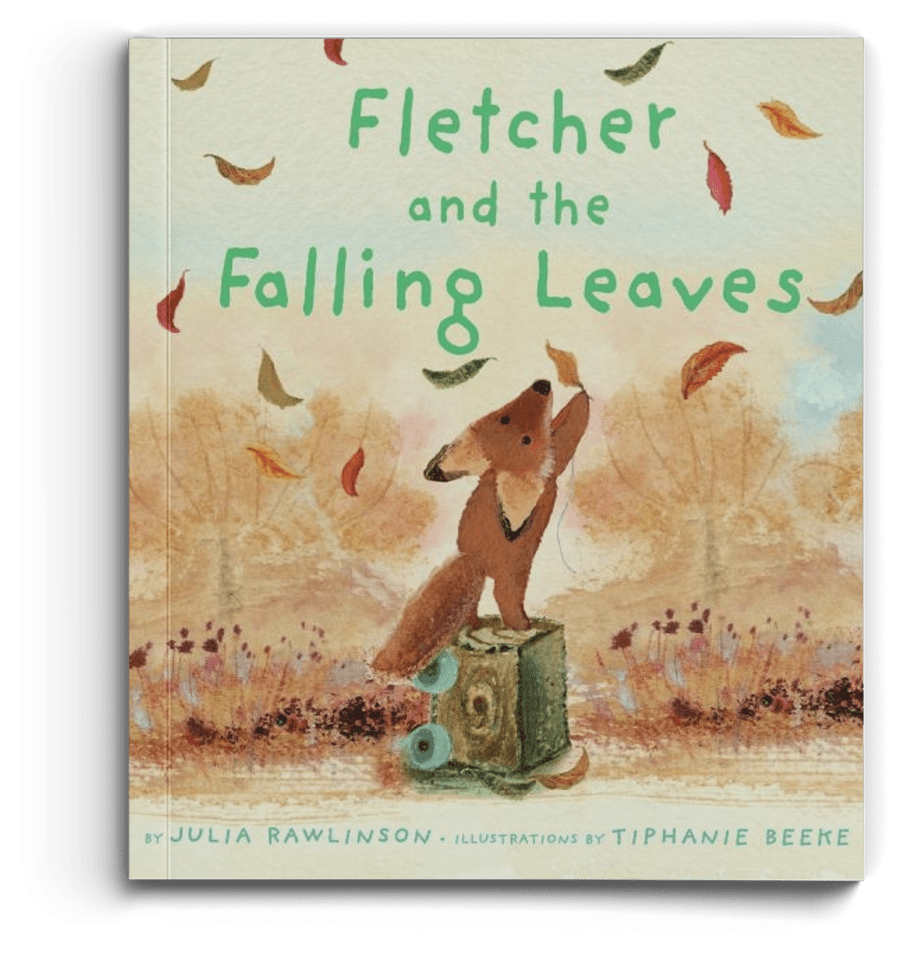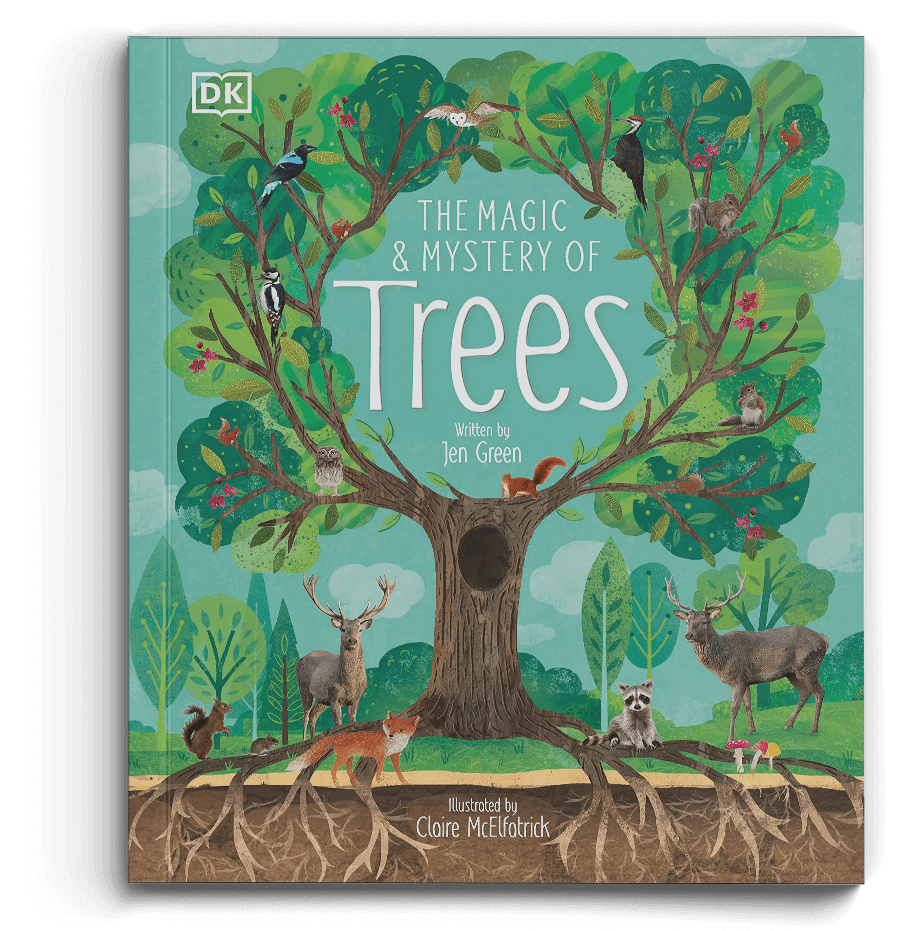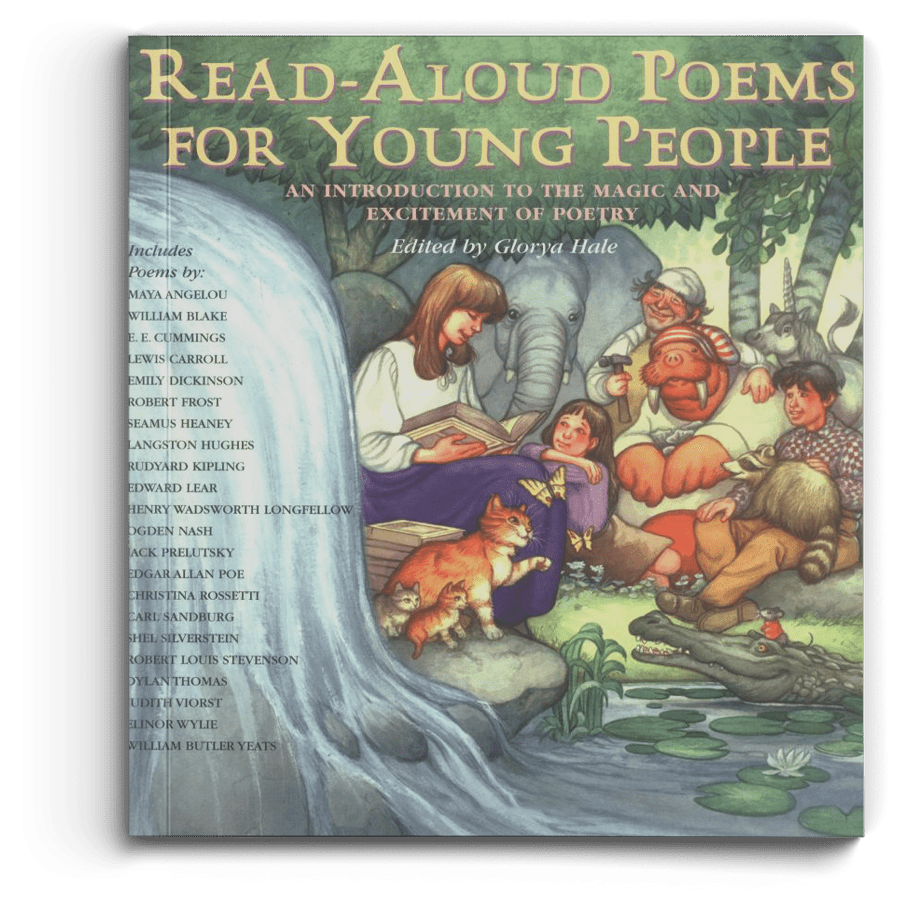![]() Enhanced – check your inbox: for activities in The Monthly Toolkit
Enhanced – check your inbox: for activities in The Monthly Toolkit
written by Julia Rawlinson and illustrated by Tiphanie Beeke

hat a precious story! Fletcher and the Falling Leaves takes your children along with a little fox named Fletcher as he tries to save his favorite tree from losing all its leaves. Through his efforts—and worry—he slowly learns how transformation is part of life and even benefits others. The satisfying ending highlights the beauty of different seasons.
Written and illustrated in a whimsical style, the use of figurative language, typography, and autumn color palette blend together to create a picture book perfect for children of all ages. Little ones will be swept away by this delightful tale. For older children, Fletcher and the Falling Leaves works well as both a springboard for discussion and an example of beautiful literary language. You can even use the illustrations to do picture study!

written by Jen Green
uality nonfiction books inspire children in a way a textbook never could! The Magic and Mystery of Trees captures the curiosity of children as it invites them to explore the world of trees. As it says in the beginning, “From the deepest, densest forests to our local towns and cities, trees are all around us. We share our world with trees, living side by side with them but often, overlooking them. Wander through the pages of this book to discover the secret lives of trees.”
I love that phrase: wander through the pages of this book. With its unique mixture of illustrations and photographs, use of earthy tones throughout, and interesting facts about trees and more—it truly feels like the book beckons children to wander through it as they embark on an adventure.
Younger and older students can use this book as a part of a unit study, science course, or just to enjoy!
edited by Glorya Hale

utumn weather invites us to snuggle up with hot mugs of apple cider and enjoy reading together as a family. Usually, we reach for some sort of fiction, but what if we tried something different this fall? Poetry.
Read-Aloud Poems for Young People provides plenty of poems to choose from, so kids of all ages can discover the beauty and humor and insights poetry has to offer. I think of poetry as playing with language, creating music, painting images with words. A steady diet of poetry will improve your children’s writing skills, but there’s so much more to it than that.
This collection of poems includes a variety of types and subjects by both well-known, and a bit lesser-known poets. The best part: they are perfect for reading aloud. Even if you have an aversion to poetry (thanks to being forced to “analyze it” for years), give it a try. I think you may just fall in love with it—or at least develop a new appreciation for the power and beauty of words—right alongside your kids.
